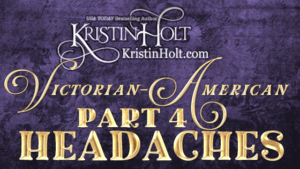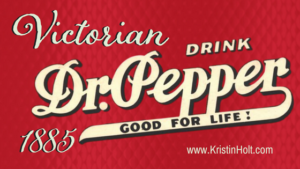Vaseline: a Victorian Product?

.
Vaseline: a Victorian Product?
.
If you had to guess, would you suppose petroleum jelly debuted in everyday American life in the nineteenth century? Twentieth? Twenty-first? Eighteenth?
.
You might be surprised to learn Vaseline was developed in 1873 and within just a year, had made such a splash, that the product had become commonly available from East coast to West.
.
![]()
.

Robert Augustus Chesebrough, British chemist, and inventor of Vaseline. Image courtesy of Vaseline.com.
.
1859
.
THE DISCOVERY
.
Robert Augustus Chesebrough, a 22 year-old British chemist, travelled [sic] to Titusville, a small Pennsylvania town where petroleum had recently been discovered. Chesebrough, who had been making kerosene from the oil of sperm whales, was eager to learn what other products could be made from petroleum. Shortly after arriving in Titusville he became intrigued by a naturally-occurring byproduct of the oil drilling process that seemed to have remarkable skin-healing properties. While watching the oilmen, Chesebrough took note of how they would smear their skin with the residue from the drill to help heal their cuts and burns. Inspired, Chesebrough began his quest to help heal America’s dry skin.
.
.
All in the name of science! (or marketing?)
.
Chesebrough is reported to have marketed his product by staging demonstrations in which he would “burn his skin with acid or an open flame, then spread the clear jelly on his injuries.”
.
~ Petrocultures: Oil, Politics, Culture. Edited by Sheena Wilson, Adam Carlson, Imre Szeman. p 173.
.

Vaseline tin, “Original”, Established 1872. Image courtesy of Pinterest.
.
According to Vaseline’s Wikipedia page:
.
The first known reference to the name Vaseline was by the inventor of petroleum jelly, Robert Chesebrough in his U.S. patent for the process of making petroleum jelly (U.S. Patent 127,568) in 1872. “I, Robert Chesebrough, have invented a new and useful product from petroleum which I have named Vaseline…”
.
In 1859, Chesebrough went to the oil fields in Titusville, Pennsylvania, and learned of a residue called “rod wax” that had to be periodically removed from oil rig pumps. The oil workers had been using the substance to heal cuts and burns. Chesebrough took samples of the rod wax back to Brooklyn, extracted the usable petroleum jelly, and began manufacturing the medicinal product he called Vaseline.
.
Vaseline was made by the Chesebrough Manufacturing Company until the company was purchased by Unilever in 1987.
.
![]()
.

Robert Cheesebrough’s “Vaseline” Petroleum Jelly U.S. Patent #127,568, dated June 4, 1872.
.
![]()
.

Image found on Pinterest, here. Illustrates the many different uses of Vaseline petroleum jelly, and the different products made by Chesebrough’s company.
.
![]()
.
SELLING FAST!
.
By 1874, only two years after its branding, Vaseline® Jelly was being sold across the U.S. at the rate of a jar a minute. That’s over 1,400 jars a day!
.
.
ADVERTISEMENTS appeared soon after the 1872 patent date.
.

The Burlington Free Press of Burlington, Vermont on January 3, 1873.
.

1 of 3: Advertisement for Vaseline in “Dry Goods”, published in St. Louis Post-Dispatch of St. Louis, Missouri, on August 17, 1874.

2 of 3: Advertisement for Vaseline in “Dry Goods”, published in St. Louis Post-Dispatch of St. Louis, Missouri, on August 17, 1874.

3 of 3: Advertisement for Vaseline in “Dry Goods”, published in St. Louis Post-Dispatch of St. Louis, Missouri, on August 17, 1874.
.

Antique Chesebrough Vaseline Manufact’c Co. Purple Glass Bottle. Image: Courtesy of Pinterest.
.

What is Vaseline, what is it useful for, and how is it made? New York Tribune of New York, New York, on January 12, 1875.
.

Vaseline: Nature’s Remedy. Advertised in Quad-City Times of Davenport, Iowa, on April 17, 1875.
.
$0.25 in the year 1875 is equivalent to $5.40 in 2017
$0.50 in the year 1875 is equivalent to $10.80 in 2017
$1.00 in the year 1875 is equivalent to $21.60 in 2017
.
.

Atchison Daily Patriot of Atchison, Kansas on July 7, 1881.
.
.


Two views of an antique wooden crate labeled “Blue Seal” Pomade Vaseline. “Blue Seal” Trademark was Chesebrough’s reaction to competitor’s imitating his three-times purified petroleum jelly (with lower quality, as Chesebrough asserted), thus his new seal became his sign of trusted quality and purity. This crate is currently for sale by JRL Auctions (JLRAuctions.com).
.
![]()
.
VICTORIAN USES OF PETROLEUM JELLY
.

External and internal uses of petroleum jelly. New York Tribune of New York, New York on February 27, 1874.
.
As this newspaper article (immediately above) cites uses of Vaseline petroleum jelly (1874), external and internal, for “a vast variety of disorders”…
.
…especially rheumatism, diseases of the mucous membranes, and for the cure of catarrh whenever manifested and for eczema and skin diseases of all kinds. Also that a large number of burns, scalds and wounds have been more quickly relieved and healed by vaseline than by any treatment… hitherto employed. …chapped hands and lips, sunburn, musketo [sic] bites, after shaving, in preparations for the hair, and keeping the head sweet and clean. Ointments, cerates [sic], and embrocations.
.
![]()
.

Chesebrough Manufacturing Company of Vaseline Petroleum “Hair Tonic”. Horse-drawn wagon. Image Public Domain, courtesy of Wikipedia, from Vaseline’s Company Archives.
.
![]()
.
.
.
![]()
.
The list of “Notions” for sale, including Colgate’s Pomade Vaseline, sparked connections with other blog articles I’ve written:
.
.
Victorian Pharmacists (Druggists) Invented Other Creations:
.

.

.
Updated August 2022
Copyright © 2017 Kristin Holt LC
Vaseline: a Victorian Product?






























Interesting article, Kristin! Thank you for such great research. Now I know who to ask when I have a question about such things!
Hi Denise!
Thanks for stopping by, reading, and commenting. I’d be honored to help with any 19th century questions. =)
~ Kristin
Have you come across a product called “Ursina”? It is unclear to me what it is, but in context I suspect it is something a well ordered home would have had in the Edwardian era, probably along with cosmetics and patent medicines. Any help you can give is appreciated.
Hi Richard–
I’ve not heard of “Ursina”. Wish I could be of more help.
~Kristin